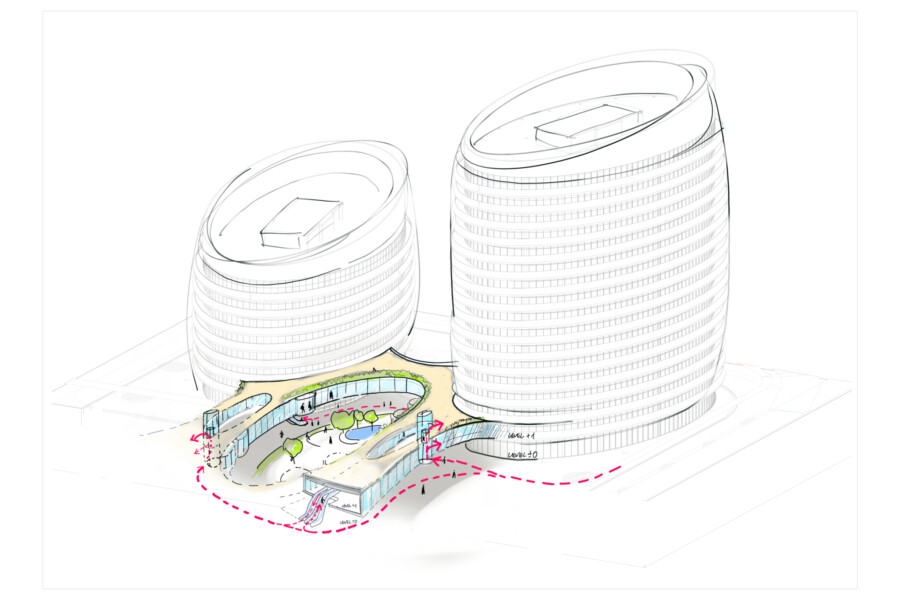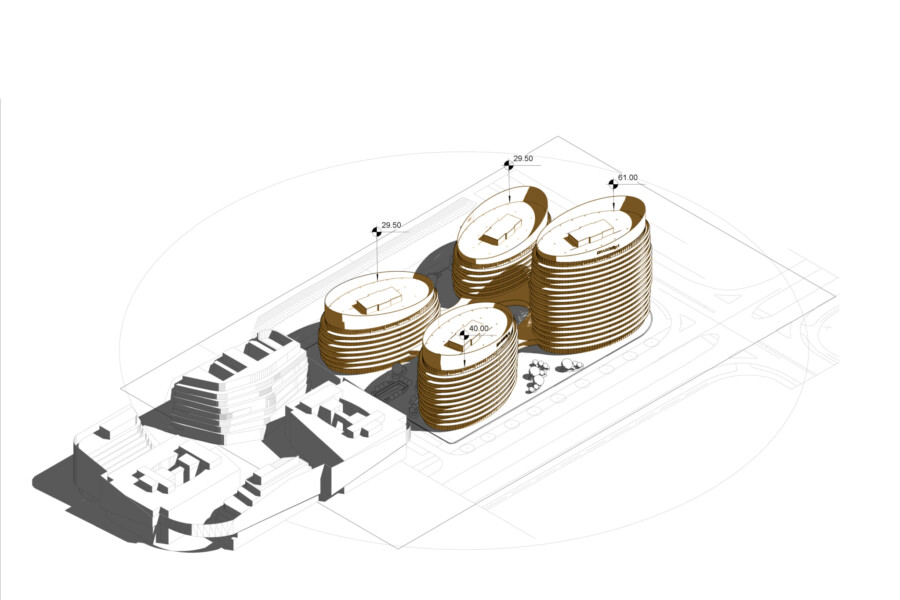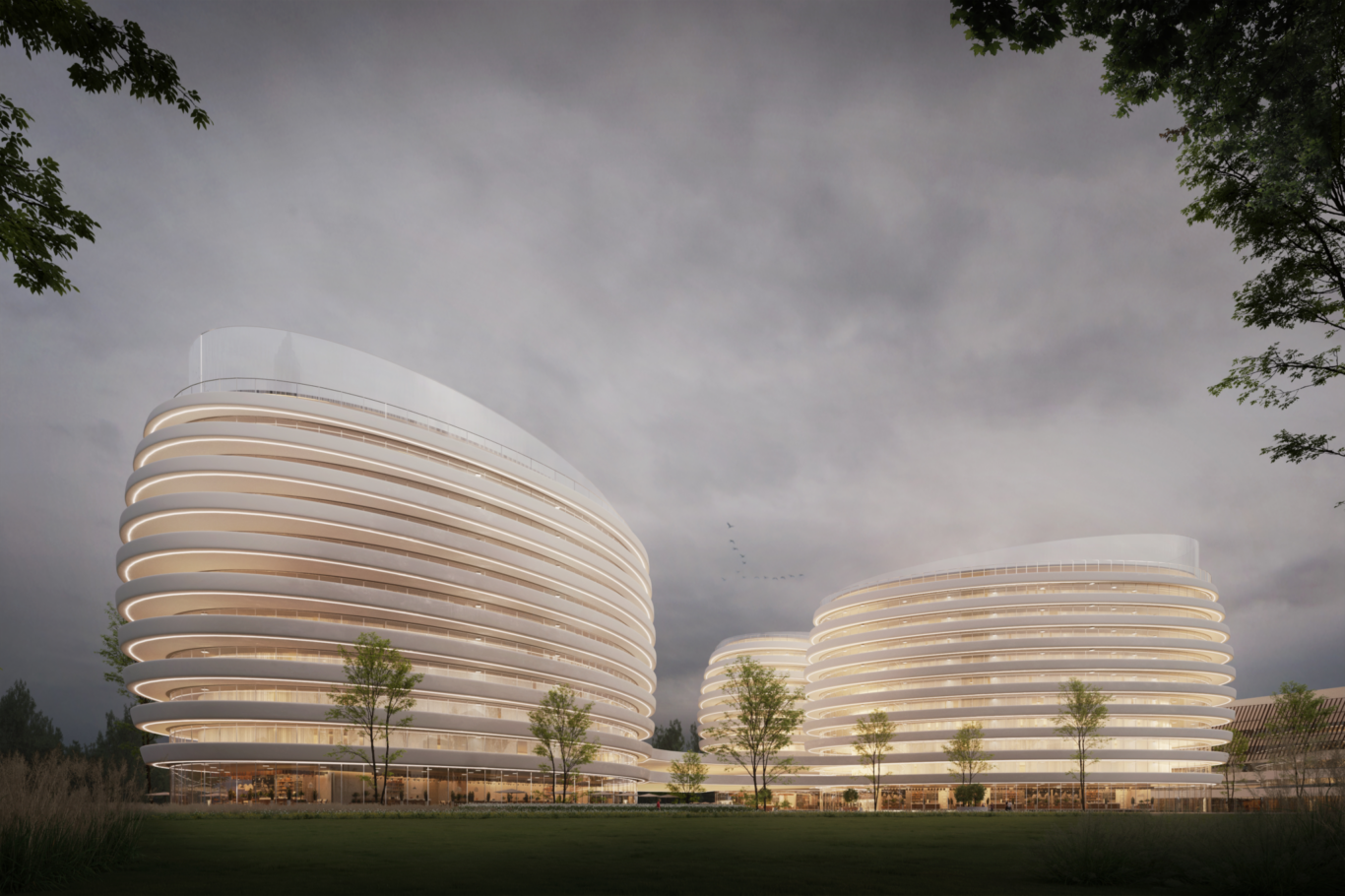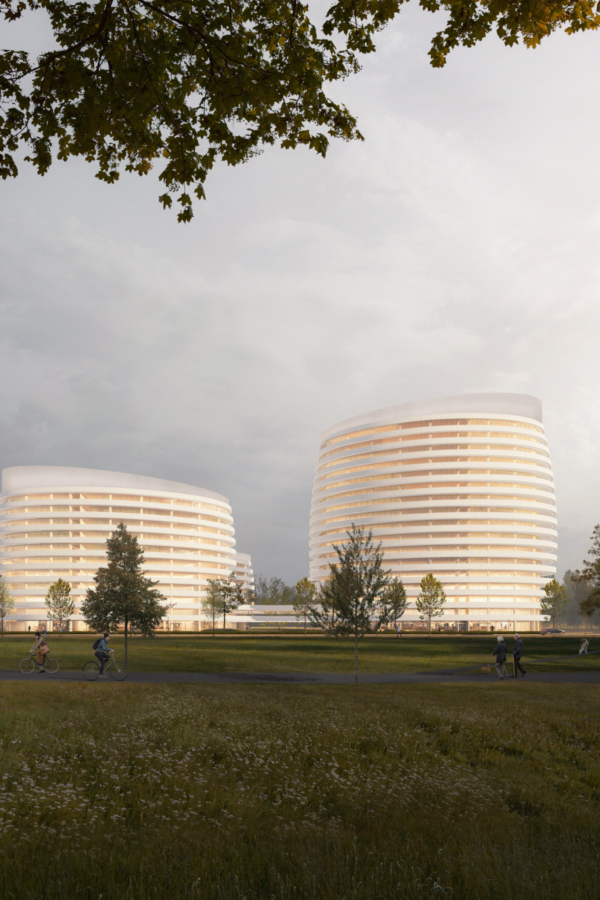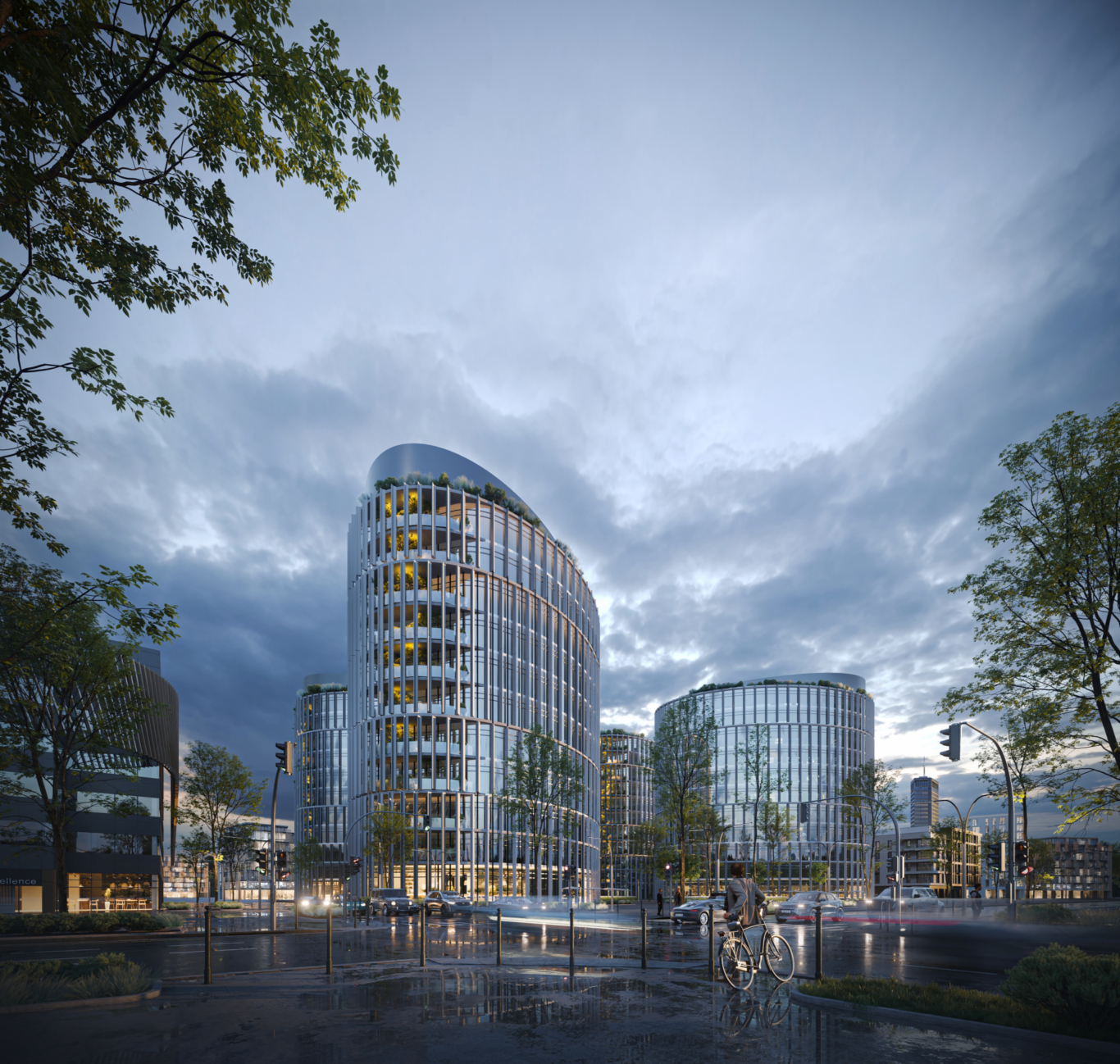
Design concept for a workplace development in Belgrade, Serbia
Chapman Taylor’s Warsaw studio took part in a competition for the design of an office complex located in the Serbian capital, Belgrade, in collaboration with Chapman Taylor Prague.
Belgrade is the largest city in the Balkans and the scheme will be located in the New Belgrade district, a fast-growing central business district on the left bank of the Sava. We aimed to create a landmark development for this exciting part of the city, with its abundance of new workplaces and parks.
The project is to be delivered in two phases. Each plot is around 20,000m2 with a requirement for 10% greenery and a total of 1,500 parking spaces. The buildings are designed to target LEED Gold or DGNB gold. The ground floor is proposed for flexible uses, either as a workplace, F&B or retail space. We set out to create an ‘elastic scheme’ allowing floorplates to be easily divided between two, three or four tenants.
Our designs are inspired by elements found in Serbian nature such as caves and river sandbanks. We prepared three façade studies to respond to the client’s requirements.
The first has vertical divisions and openings in the areas where balconies are located, with a terrace for each floor.
The second approach is focused on sustainable solutions and has a double-skin façade with external and internal layers and openable windows and ventilation between layers.
The final concept has a horizontal façade expression to highlight the organic shape of the buildings and provide covered terraces with recessed (shaded) glazing. The buildings are linked at the first floor, creating an area for leisure and F&B around an external atrium.
The designs incorporate both passive and active sustainability strategies. Passive strategies are architectural measures to reduce energy demand and provide a high level of comfort. Active strategies are measures related to technical design, using high-tech solutions to maximise energy efficiency. Our solutions include a modular façade system, potential triple glazing, a flexible structural system to include “soft spots” in the structure to enable floors to be linked in the future, green roofs, light-coloured roofs to reflect sunlight and reduce heat islands, low embodied carbon materials, EV charging, facilities for cyclists and runners, greenery around the building and rainwater harvesting for irrigation and WC flushing.
